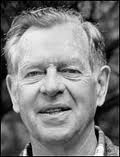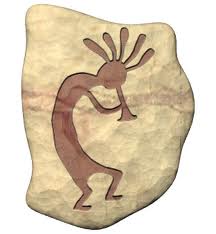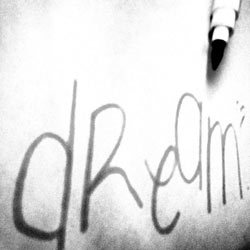 _Review: The Dream Artist By Paula R. Stiles, Innsmouth Free Press If you’ve read much of my fiction, you’ll know that I have a strong interest in shamanism, both from the anthropological and the practical points of view. So, when a chance came our way to review, and host the author of, a new book on shamanism during her book tour, I jumped at it and talked Silvia into going along. Shamanism may seem like an odd subject for a dark fantasy ‘zine, but it isn’t, really. The first ghost hunters were shamans and the first people to venture deep into caves and other dark places were probably shamans, as well. Horror is perhaps the oldest genre of storytelling there is and the ghost story the oldest narrative. Hence the “campfire tale”. The Dream Artist is not so much about the terrifying aspects of shamanism, or at least, not so much the kind that rip you apart if you don’t master them before dawn, as the more-spiritual aspects of the belief in spirits and dreams. Dreamshield is a Dutch journalist who has spent a decade investigating, and writing articles about, New Age practices. The Dream Artist is about her apprenticeship with an American shaman named “Vidar”, who teaches her shamanic practices (mainly, lucid dreaming) in the general tradition made famous by (or created by, depending on whom you read) Carlos Castaneda. Hence the title, which echoes a famous biography/memoir about Castaneda. The book itself echoes the story of the sorcerer’s apprentice told by Castaneda in his books, with Dreamshields starting off with vision and dreaming exercises, going to a sweat lodge, encountering the question of using hallucinogens, and meeting her “spirit animal”, all under the guidance of an indigenous teacher. I have to admit that I am not a fan of the Castaneda tradition. It’s been pretty clear since a now-infamous investigative article on him came out in 1973 that his anthropological research was a fraud and, to be honest, I thought a lot of his “insights” weren’t anything a broad-minded person couldn’t figure out on his/her own with a good book on meditation or guided dreaming. Also, the racism that his narrator character shows toward Don Juan (the narrator’s Yaqui teacher) is intense, patronising and difficult to tolerate. Going with the theory (commonly put forth by Castaneda’s supporters) that Castaneda is really supposed to be Don Juan and not the deliberately-ignorant narrator does not improve the use of the bigotry. Calling him a “trickster” figure doesn’t help, either. And the questions of fraud and cultural misappropriation (including an ongoing debate over whether a term/set of traditions originally identified in Siberia can really be applied beyond Eurasia) have never been satisfactorily answered. But it’s not necessary to think much of Castaneda in order to appreciate The Dream Artist. One of the distinct plusses of the book is that Dreamshield is not just some naive dabbler who stumbled on shamanism during a quickie retreat. As a journalist on the New Age movement, she comes into the story already plugged into the New Age culture, hip to the various dodges and cons (initially, for example, she dismisses Vidar as a poseur looking to score with the ladies). In fact, some of the scene-setting and anecdotal asides that she puts in, especially early on, are quite interesting. This is someone with a lot of friends in the New Age movement, who regularly interacts with people involved in it. Of further interest to an American audience is that she’s Dutch, so you’re getting the perspective on the movement, and the Castaneda offshoot, from a European non-anglophone. The discussion of “conscious dreaming” (and how to do it) has some good set-up (like the description of the use of stones as meditation tools), though it tends to get buried in overly-long paragraphs. The book tour’s blurb promises “instructions” on how to conduct conscious dreaming, but I felt the instruction-manual aspect got lost in the apprentice narrative, particularly in the second half of the book, as it often does in this literary tradition. And the ending is strangely abrupt, with no indices or other endpages. I suppose this was intentional, to show that the apprentice’s journey is ongoing, but it confused me more than anything, and had me looking to see if my review copy had been somehow left incomplete. You can also enjoy the book as pure story, the tale of a young woman learning about shamanism (by practicing an apprenticeship with a shaman) in a New Age context, a tradition few women have had access to until recently. The double role of telling a good yarn and telling the reader how to make a good yarn of his/her own is also part of this literary tradition. Joseph Campbell would have been proud. Elizabeth August (Dreamshield). The Dream Artist: Dreaming and Spiritual Adventure in a New Millennium.
0 Comments
The Medicine Wheel - Your Signpost Toward Totality  The medicine wheel has many meanings in shamanistic traditions and one of them is being a signpost in the dreaming reality. Together with your power animals, it leads you towards totality. To clarify: in dreaming you learn to travel with your dream- or energy body from this reality to the boundless second reality to discover that you are the creator of your own reality. Shaman Vidar taught me about this medicine wheel ritual and you read more about this in the next excerpt from my book The Sorcerer’s Dream. Excerpt Tonight we will set up my medicine wheel. The medicine wheel towards the totality to be exact. I await in expectation. With slow movements Vidar takes five pebbles from somewhere between the junk and the papers. He places four in an imaginary circle and puts the fifth one right in the middle. “The medicine wheel is a guide in the dream reality,” he starts to explain. “Every stone signifies one of the four wind directions, the stone in the middle is the centre from where you travel. Accompanied by the drum you will momentarily travel to the four wind directions and in each one of them you will identify the dwelling places of knowledge.” I worry because I know my sense of direction has it’s short comings for such a trip. “With wind directions I mean the spiritual wind directions,” he exemplifies. “By identifying these wind directions and the dwelling places, they will prevent you from having a spontaneous experience and being unaware of your whereabouts.” He adds that the medicine wheel is the fastest way to reach the totality. “Look at it this way, the spiritual wind directions are represented by entities and together with your animal totems, whom you will meet at a later stage, they are the roadmap leading you into totality.” I ask what significance is attached to these wind directions, in the sense that it might represent a certain development or phase in ones life for example. He would rather wave away any possible meaning. “Originally there is no significance to it,” he says, “it prevents you from fixating it. The medicine wheel is an individual process and its significance depends on the specific information you obtain elsewhere.” Finally he says, “wherever you travel you retrieve your history and accumulate enormous reserves of spiritual energy.” Vidar gets up and gathers five big pebbles from the floor in front of the cabinet and places them in a circle in front of the deerskin. “We commence in the north,” he says and invites me to take place on the deerskin, facing the street. Then he picks up his drum next to the deerskin and explains: “The repetitive rhythm and fast beat of the drum will guide you during your journey. The overtones of the drum influence the wave patterns of the brain, meaning it sets off an increased state of perception, perceiving with your spiritual senses, your inner eye if you will.” He gives further instructions. “Look intensively in every wind direction to determine what you see and absorb every little detail.” I try to place myself in a comfortable crossed-legged position and tell him I am ready. As the rhythm intensifies I fly away on the deerskin towards the northern wind direction, high above green mountains, interrupted by rough rock formations. From the highest point there is a crystal clear stream which flows down the sloping hills. “Search for your dwelling place,” I hear Vidar say. My feeling tells me I have no time to lose. Far beneath me I discover a sandy path effortlessly making its way among the hills. I descend as soon as possible and quickly take a sharp turn to the right, into another path which leads towards a splendid bare piece of sandy soil with a little lake. Here and there long strong blades of grass arise from the ground. To my left, at the foot of the lake, steep rock formations rise up to the blue sky. A frail looking woman with long black hair comes towards me. It looks like she is floating. Her cream colored skin and grey eyes are in beautiful contrast with her long black hair all the way to her waist. She signals for me to follow her as she runs in the direction of the rocks. Then she climbs up the cliff and I climb after her, pulling myself up into the opening of the cave, just as she does. Once we’re in the cave she invites me to sit opposite her, I take a good look around, I hear Vidar telling me to return to the centre of the wheel to travel to the next wind direction. I say good-bye to the woman and return to the slowing of the rhythm of the drum. About The Dream Artist The Dream Artist, A true story of initiation into the Native American sorcerer’s tradition by Elizabeth August, Dreamshield. The author gives us a glimpse into the very real world of lucid dreaming and astral projection. Her direct experiences with a modern day mystic, Running Deer, takes the work of Castaneda one step further. In The Dream Artist, she reveals unique steps to mastering lucid dreaming and traveling to the unknown. Latest review "Dreamshield has an engaging narrative style and tells stories that are engrossing. There is a lack of literature on female sorcerers and this book makes an admirable effort to fill this lacuna. When, at the end, she attains “totality,” the reader will share her exaltation." ~ Stanley Krippner, Ph.D. Alan Watts Profess of Psychology, Saybrook University. The Sorcerer's Dream is available at Booklocker, Amazon, and everywhere they sell books. About Elizabeth August aka Dreamshield Elizabeth August, Dreamshield, lives in the Netherlands (Europe), she is mother. She studied social legal studies and the passed ten years she is a (freelance) journalist and publisher. Besides that she has a healing practice and gives workshops about the Art of Dreaming. Lucid Dreaming, the world at your feet  Why would you want to learn more about lucid dreaming? Well, the purpose of human is to master lucid dreaming shamans say. One becomes the dreamer and the dream, to be a living dream weaver that experiences one's own dream. Learning to dream consciously starts with attentiveness, being aware of your surroundings and your actions in daily life. And by writing down your dreams and to leave no detail behind it becomes clearer what has happened in the dream and that gives you an overall awareness. If you are aware of this reality and consciously deal with your dreams, you will find out that your dreams develop and that you become conscious in your dreams. In "The Sorcerer’s Dream" I reveal unique steps for lucid dreaming, knowledge that shaman Vidar passed during my initiation into the sorcerer’s world. In the next lucid dreaming paragraph I give you an impression of the first steps on How to Lucid Dream. Excerpt chapter 2 As the sorcerer plays his flute and dances around in a setting of white clouds, he watches me curiously. I hand Vidar the grayish green oval-shaped gemstone with the black figure. He observes the stone closely. “Good find,” he says. I carefully chose the stone from a box containing all sorts of gems in a small shop in the center of Haarlem where they sell books, incense and jewelry. The bent figure is also known as the dancing sorcerer, a male being with physical characteristics of several animals: with eyes of a wolf, antlers of a moose, a horse’s tail and bear claws. Vidar holds the stone at arm’s length between his thumb and index finger and says “it’s jade.” He tells me it is a medicine stone, which means that the stone has healing properties and can be used at shamanic healing rituals. For the time being its role is that of the prey and I am the hunter who must try to find it in my dreaming. During the past week, I have been studying the stone from every angle, but there is so much to be discovered that I cannot see the woods for the trees. I ask Vidar, holding the stone in his left hand, what would be the best procedure to learn all the stone’s characteristics by heart. With the index finger, he caresses the figure and the contour of the stone. “First you study the sorcerer’s outline and draw the lines in your mind until you are able to visualize them. When you succeed, you follow the same procedure with the white spots and the stone’s shape. Carry the stone with you at all times and make a habit of studying it on every occasion, even when you are standing in line at the cashier’s desk,” he smiles. “You have to know every spot, dent or drawing from the inside and from the outside. Practice as long as it takes to get it in your mind and aim to find the stone in your dreaming within the next ten days. Then you start counting the days.” “And what if I don’t find it within that time?” “Then you start all over again, until you get it right,” he replies, and gives me the necessary instructions before falling asleep. “Look at the stone in detail and place it somewhere near, close your eyes and visualize the stone on the inside of your inner eye, between your eyebrows. It is important to become conscious of the moment right before you fall asleep. At that specific moment you visualize the stone immediately inside your inner eye.” My mind resists. Waking up before falling asleep seems impossible. He must have read my mind, because he says; “It’s actually enough to have the intention to be conscious before falling asleep. Attempt it.” I decide not to worry anymore. I will just do it. “Aim to wake up consciously every morning and visualize the stone with your inner eye,” he continues as he slowly brings the stone closer. “Pick up the stone and move it closer from an arm’s length to the tip of your nose as if the stone is coming toward you. Do not forget to repeat to yourself that you will find the stone,” he concludes. He carefully places the stone in front of me on the table as if it is fragile, pushes his chair backward and gets up to boil water for tea. I place the sorcerer in the palm of my hand, he gives me a defiant look as if he is about to make a getaway and obviously expects me to chase after him. He is one in a million and I will do anything to find him. About the Sorcerer’s Dream The Sorcerer's Dream, A true story of initiation into the Native American sorcerer’s tradition by Alysa Braceau, Dreamshield. The author gives us a glimpse into the very real world of lucid dreaming and astral projection. Her direct experiences with a modern day mystic, Running Deer, takes the work of Castaneda one step further. In The Sorcerer’s Dream, she reveals unique steps to mastering lucid dreaming and traveling to the unknown. Latest review "Dreamshield has an engaging narrative style and tells stories that are engrossing. There is a lack of literature on female sorcerers and this book makes an admirable effort to fill this lacuna. When, at the end, she attains “totality,” the reader will share her exaltation." ~ Stanley Krippner, Ph.D. Alan Watts Profess of Psychology, Saybrook University. The Sorcerer's Dream is available at Booklocker, Amazon, and everywhere they sell books. About Alysa Braceau Alysa Braceau, Dreamshield, lives in the Netherlands (Europe), she is mother of a 7-year old daughter. She studied social legal studies and the passed ten years she is a (freelance) journalist and publisher. Besides that she has a healing practice and gives workshops about the Art of Dreaming. Humans and animals have several assemblage points. However, the cosmic assemblage point and the assemblage point of the totality are the most important. The cosmic assemblage point belongs to the knowledge of the shamans and the one of the totality belongs to the people of knowledge.
The cosmic assemblage point has two features: the first one is the preservation of energy and the second is manipulation. Shamans are constantly working on expanding their assemblage point and strengthening it by continuously exchanging earth and cosmic energy. They bring it up to full capacity for healing and traveling. The cosmic assemblage point originates somewhere in your upper body where cosmic and earth energy come together. Learn more about the The cosmic assemblage point in the next excerpt from my book "The Sorcerer’s Dream". Excerpt Vidar presses an imaginary ball of energy in between his hands and says, “You receive cosmic energy through your crown and earth energy ascends through meridians up through your feet and your legs. When you sit, earth energy enters through the first and second chakra. When the energies meet in your upper body, a third energy emerges which is three times stronger than the sun since it has inexhaustible powers. Whereas regular healers address their own body energy, shamans use cosmic energy for traveling and to receive information for healing, and to heal like a fireman using a hose. But shamans also need to learn how to maintain the energy to spiritually enlighten their fellow human beings. To make the light in the spirit tangible and recognizable and to experience the full capacity of spiritual light. You cannot even compare the sun to the light of the spirit. The sun’s energy is less pure than spiritual light which consists exclusively of pure energy. An experience with spiritual light takes you on a spiritual path which feels like a revelation. You feel like you are captured by your own spiritual light. It is beautiful to express this to someone else. The second feature of the cosmic assemblage point is manipulation, through which you will meet your own consciousness, reflecting the totality. By increasing the pressure of the two joining energies and by stepping into the conscious ball of energy – the cosmic assemblage point is within that ball – you meet your own consciousness.” He explains, “When you enter, fine energy threads of light pass through, even beyond reality, giving you an experience of intent,” he stretches his arms out. “You feel dispersed in lines of intent, call it an experience with the boundless part of the Self. The lines of intent reflect the totality. Lines of intent are pure lines of creation. Through these lines you feel connected to all that exists. Every minor particle is connected to the lines of intent.” His conclusion is short but to the point: “The reflection of the totality is a consolation prize to people unable to reach the totality,” and he watches me challenging. Undoubtedly he can read my mind. I will not settle for a consolation prize. The Dream Artist The Dream Artist, A true story of initiation into the sorcerer’s tradition by Elizabeth August, Dreamshield. The author gives us a glimpse into the very real world of lucid dreaming and astral projection. Her direct experiences with a modern day mystic, Running Deer, takes the work of Castaneda one step further. In The Dream Artist, she reveals unique steps to mastering lucid dreaming and traveling to the unknown. Latest review "Dreamshield has an engaging narrative style and tells stories that are engrossing. There is a lack of literature on female sorcerers and this book makes an admirable effort to fill this lacuna. When, at the end, she attains “totality,” the reader will share her exaltation." ~ Stanley Krippner, Ph.D. Alan Watts Profess of Psychology, Saybrook University. The Sorcerer's Dream is available at Booklocker, Amazon, and everywhere they sell books. About Alysa Braceau Alysa Braceau, Dreamshield, lives in the Netherlands (Europe), she is mother of a 7-year old daughter. She studied social legal studies and the passed ten years she is a (freelance) journalist and publisher. Besides that she has a healing practice and gives workshops about the Art of Dreaming. |


 RSS Feed
RSS Feed
